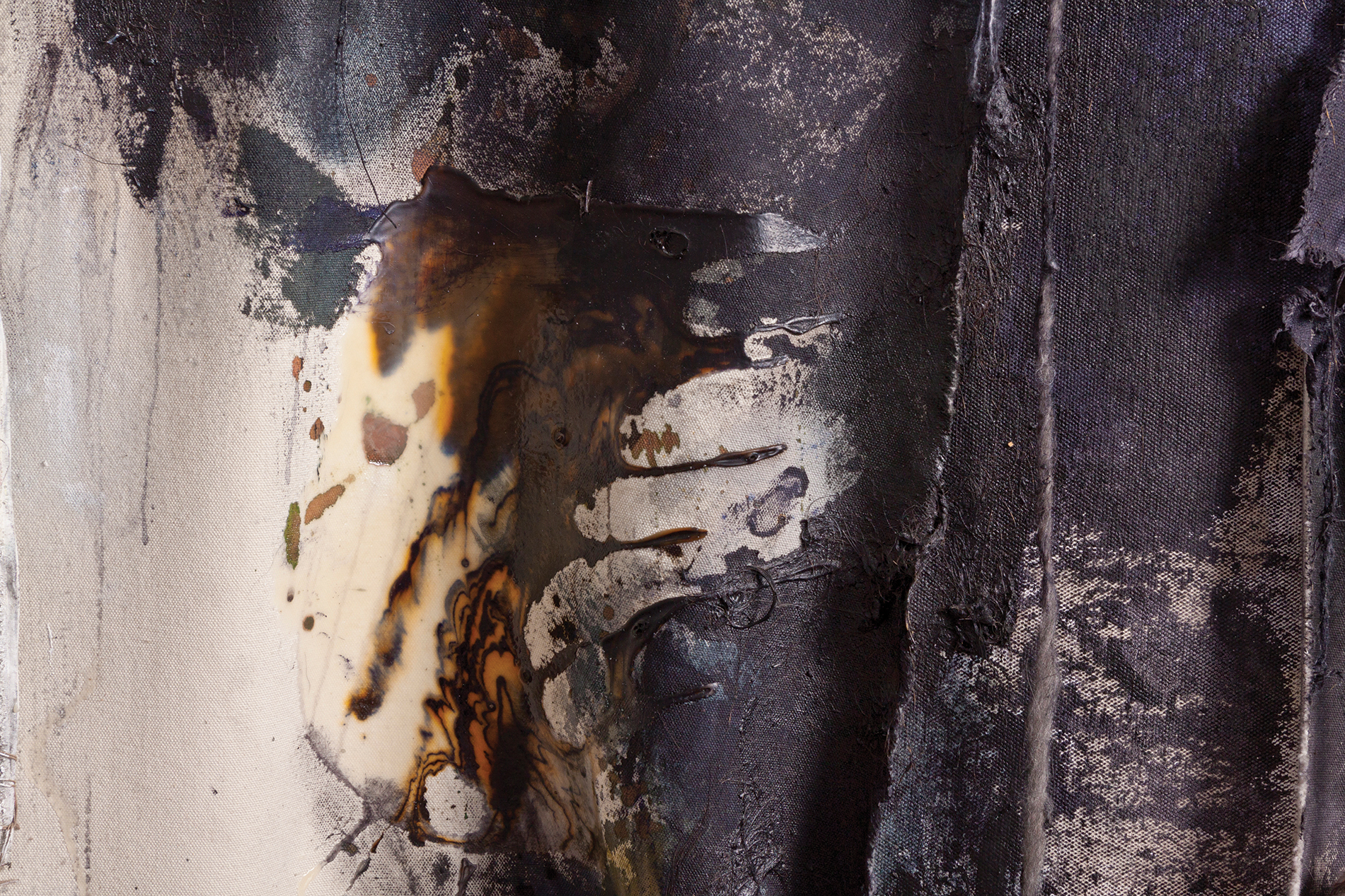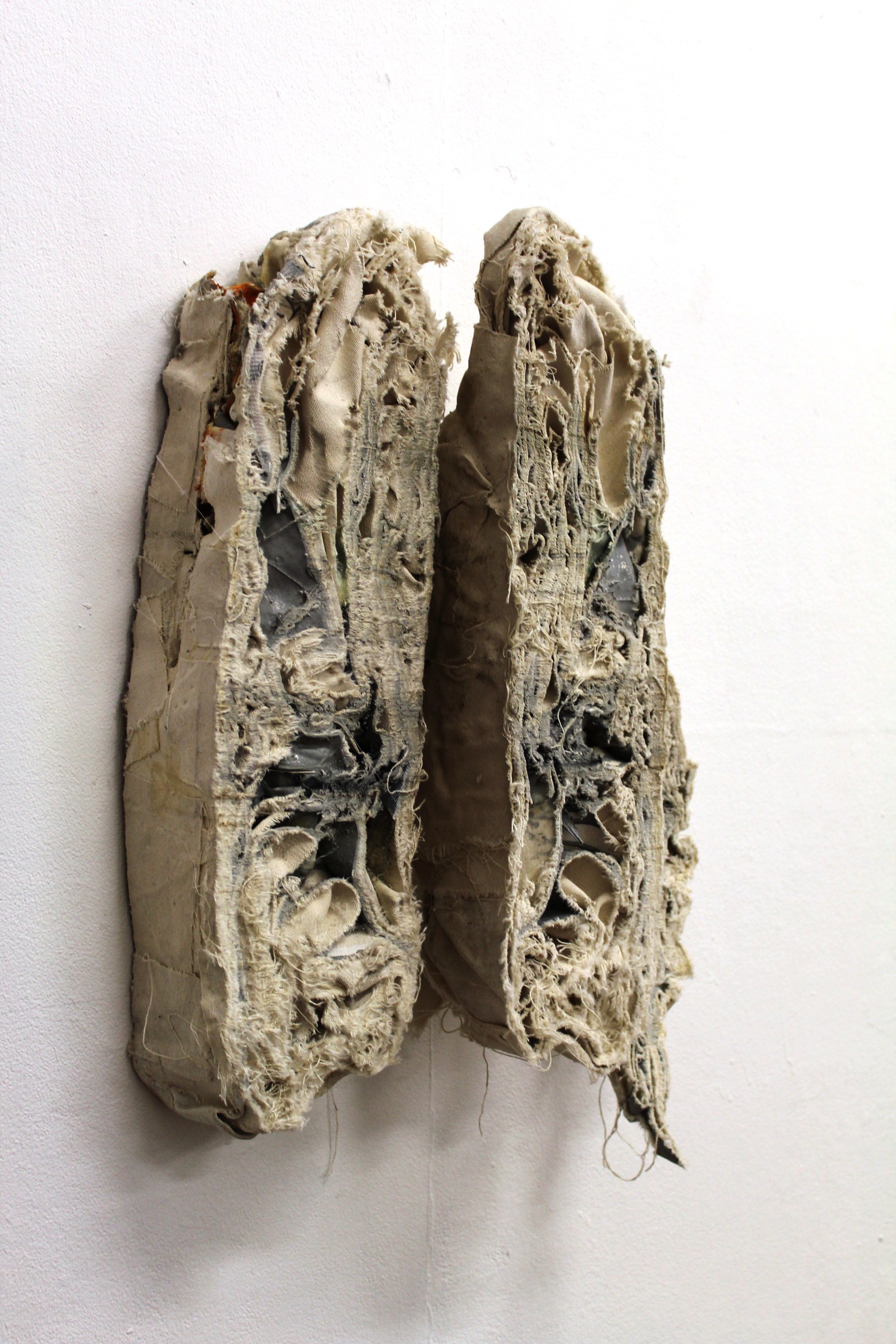In this work titled Deconstruction, I address the concept of being mindful about consumerism. I investigate the belief that second-hand clothing, considered to be waste, to still be wearable.
I aim to illustrate the outcome of used clothing that is dumped or discarded, by deconstructing jackets and using them as found materials in the studio, and then recycling them through the process of making, into a work of conceptual art.
In my interpretation, leather and fabric in different weights are deconstructed (torn, scraped and cut), intuitively selected and placed close together, inverted into dense layering and suspended from a steel construction on wheels resembling a clothing rail. The fine fabric of the lining and thick textural insulation, contrasted with the leather are exposed in many areas, to evoke a sense of the inner private world of the consumer. If the physical weight of ‘clothing’ on the rail becomes too heavy, the seemingly sturdy steel construction could snap, symbolising the fragility of the consumer that can so easily become obsessive with consumerism, which is more often about filling the emotional emptiness of the buyer.
This three-dimensional work represents how it mentally affects the way we act, think and feel, and the impact that waste has on the environment.
By rethinking consumerism, it opens up the possibilities of a new trend, therefore creating a market and need for second hand clothing as wearable or conceptual art.










